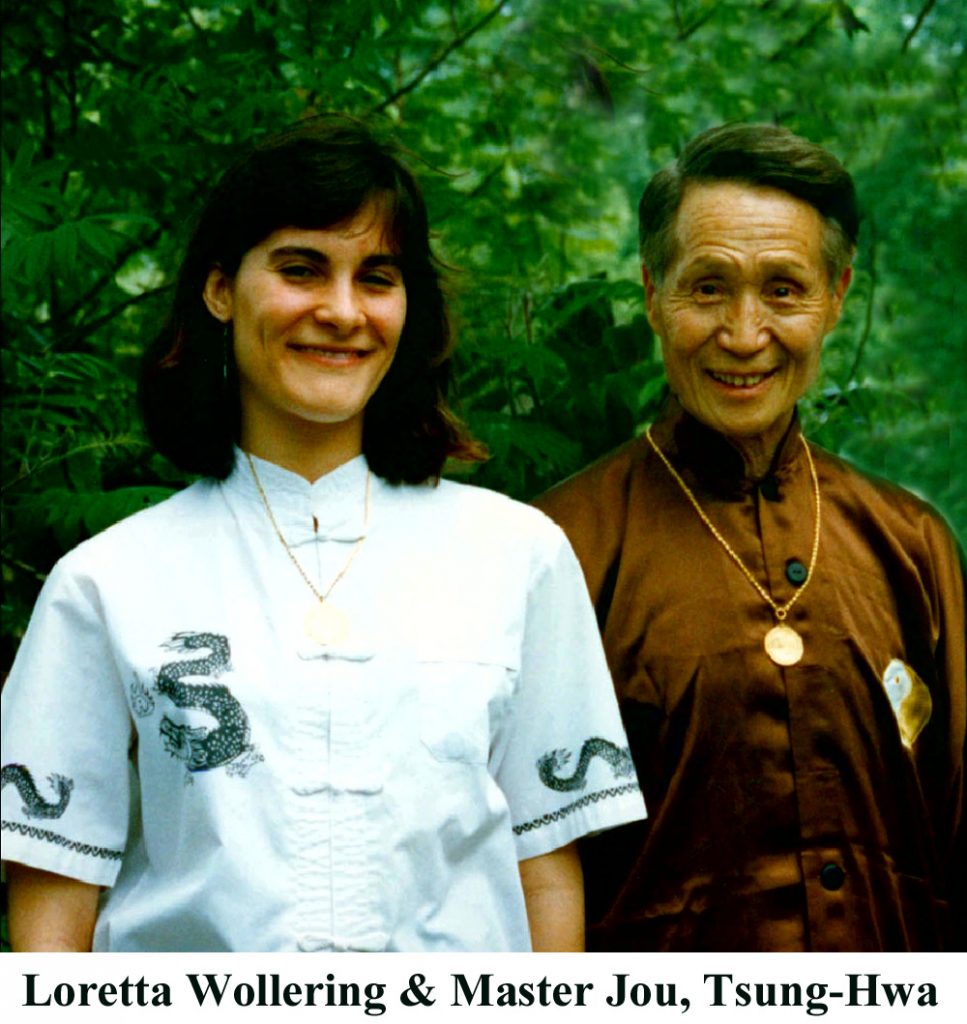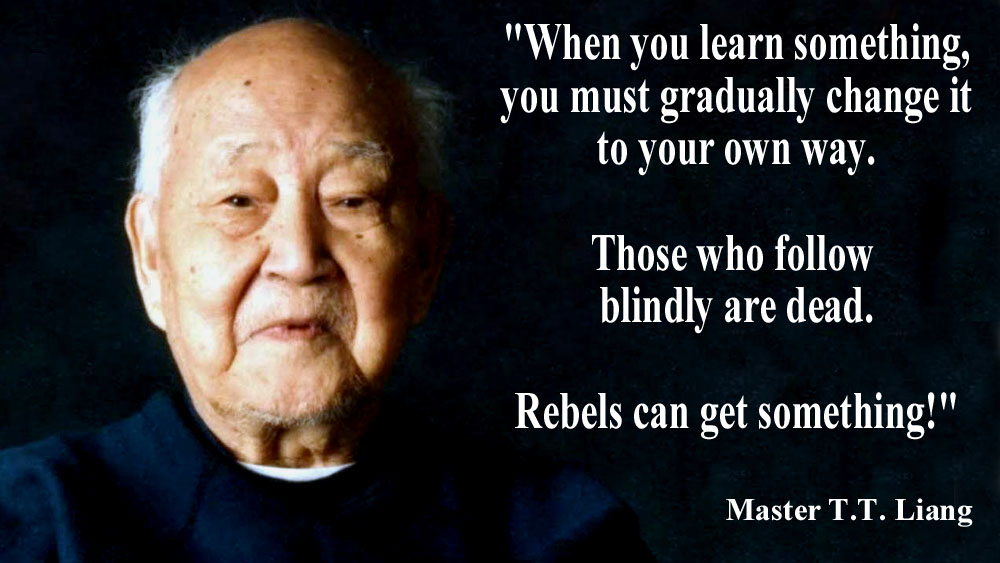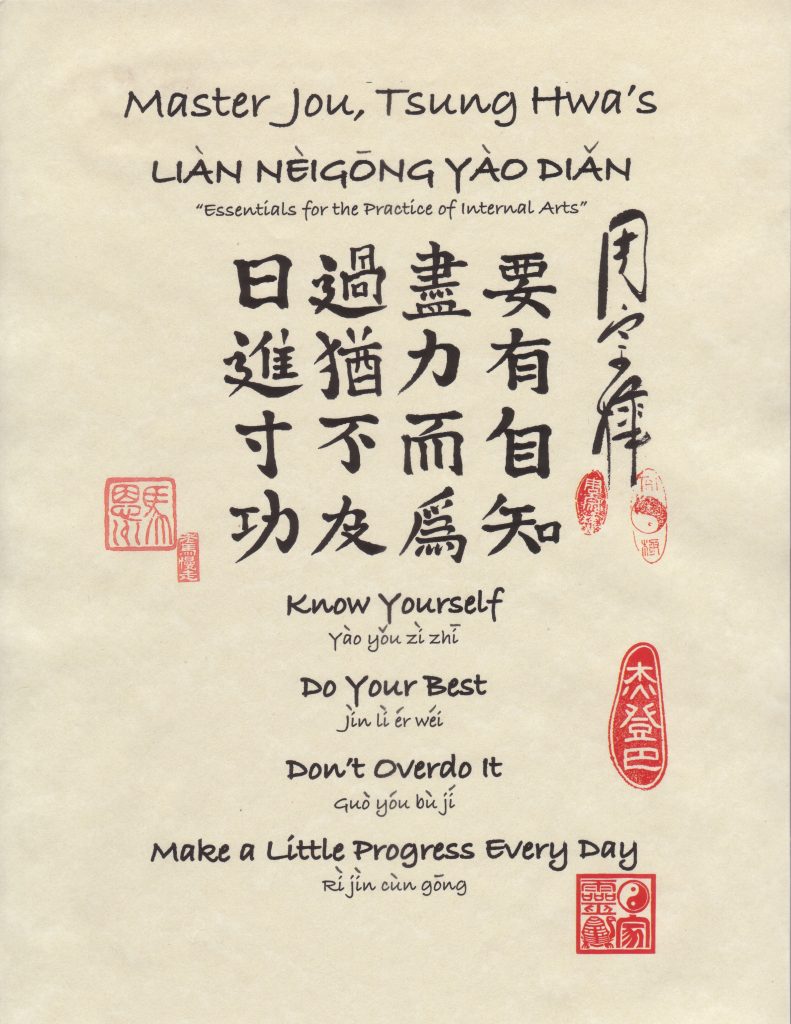Master Jou had a master plan. He had made up his mind that when he reached the age of 90 he would demonstrate to the world his new found “master keys” to energy and power. These abilities would come from his practice and discoveries about Taijiquan and Qigong. His dream was to have a Tai Chi University where all interested people, teachers and masters could come together, learn and share their knowledge. In this way, the great gift of the internal arts would ultimately be disseminated to all peoples of the world. His start on this project was the creation of the Tai Chi Farm in Warwick New York. In his book The Dao of Taijiquan, Way to Rejuvenation he wrote:
Authors Dream
“It has long been my dream that one day Americans of all ages, creeds and colors will be practicing Taijiquan in the parks of this nation as they do in China. Few places in the world have such beautiful open spaces, which can and should be used productively at no expense. The result would be a tremendous improvement in mental and physical well-being. Now after more than 30 years of researching Taijiquan, I understand that it is becoming a lost art. It is my hope that through this book we can work together to revive Taijiquan.”
Be aware that Master Jou was not trying to profit from his dream. He was not chasing fame and fortune. His dream was to benefit all of mankind through the practice of the Chinese internal arts. He was not selling his brand or style of Taijiquan either. He wanted anyone who taught these methods to share them with as many others as possible and to work with other teachers in the spirit of cooperation. If he overheard anyone saying anything negative about another style or teacher he would say to them, “We must all work together. Do not criticize!” This was his master plan and there are still many students of his working in this direction.
Chapter Fifteen of the Daodejing (Tao Te Ching) by Laozi could be said to appropriately describe Master Jou, Tsung-Hwa.
“The ancient masters were subtle, mysterious, profound, and responsive.
The depth of their knowledge is incomprehensible.
The masters were:
Watchful, like men crossing winter streams.
Alert, like men aware of danger.
Courteous, like visiting guests,
Yielding like ice about to melt.
They were simple as an un-carved block of wood.
They encompassed all things within themselves freely
like murky water flowing down the mountainside after a spring rain”.
Jou, Tsung-Hwa searched for that process of wholeness like Albert Einstein searched for a unified field theory, hoping to find the connecting thread between all the internal arts, that explained them, and did away with distinctions, leaving one harmonious whole. Just as the fabled King Arthur may have sought the Holy Grail and never saw his quest come to fruition, so too Jou, Tsung-Hwa sought the Wholistic Grail of Taijiquan. Unlike Arthur, he found it for himself, but he wanted it for all future generations, not just himself.
Who Has the Real Deal?
By John P. Painter PhD. ND.
I met Master Jou, Tsung-Hwa at Pat Rice’s A Taste of China in Winchester Virginia over 40 years ago. The result of that meeting was the beginning of a long and close friendship. I say friendship because I was never his formal student. After long discussions about the Yijing and my Li family Baguazhang, he seemed to accept me as a peer although I never really felt deserving and introduced me to many of the high level members of the inner circle in the internal arts world. I was honored by his friendship and we had many interesting adventures during his Zhang San Feng Festivals in New York and New Jersey as well as at the many tournaments and events we attended in those early days.
After his untimely death I closely watched his casual and advanced students behaviors. Some were aware of the legacy he left behind, some acted as if they had the only direct line to his teachings, and others just drifted away. Within a short time the Tai Chi Farm was closed, the buildings bulldozed and the land turned into a housing development.

A few students like Loretta Wollering and Bruce LaCarrubba started memorial events to honor their beloved teacher (Shifu). In the real world, when any well know individual passes away, their influence tends to fade into oblivion.
Legacies and lineages only last as long as there are those to carry them on. That is why I feel it is necessary to tell his story, celebrate his life, and honor those who keep the torch burning for the benefit of all those who practice the Chinese internal arts.
After Master Jou’s death, it was inevitable that each of his advanced students would teach their own versions of what they had understood from his lessons. This gave rise to many variations and interpretations according to each student’s understanding. The result was arguments and dissention among the followers, something common in the Taijiquan community. Once someone asked me, “Who has the real deal?”, i.e. who has the real art that Master Jou passed on?
The truth is no student of any master has the “real deal” because they are not their master. No one can do exactly what Master Jou did and no one can exactly replicate a teacher’s methods. This is due to physical and mental limitations that arise from different life experiences.
Therefore, no teacher has the method identical to that of his Shifu. All any student of a great teacher like Master Jou can do is to show others what he or she understood of what the teacher tried to impart.
If you study with a high level instructor, you must incorporate the Shifu’s information but this will be colored by your interpretation and understanding of the material. Your ideas, forms and practice may contain the same principles or at least the principles as you understood them from your teacher, but they can never be exactly the same as your teachers methods. What’s more, students who came before or after you got a different version of the masters methods because even so called masters must evolve or perish. The great master T.T. Laing like his friend Master Jou was also a rebel who understood what master Jou meant when he would tell a student, “You are very clever, you will figure it out. It is hard work!”

As a student of the arts you may be part of a great lineage but the art contained in that lineage is no better than your efforts to develop what you were shown or have come to understand. You will only be as good or as bad as your training and the lessons you understood or perhaps misinterpreted.
Thinking that because you were the first or second in line to learn from your teacher, it makes you better than someone else or that it gives you a corner on “the truth” is not realistic. That is why I say no one has a corner on the truth or on the “real deal”. If students and teachers can, through their own hard work (gong fu), cause the art of the teacher to deliver even 80% of what was promised, this is all one can ask for.
Each of Master Jou, Tsung-Hwa’s students received something special from him and it was not all the same. Some learned Taijiquan forms like Yang, Hao and Chen while others studied meditation. If those students look honestly at their practice over time, they will have to admit that today their understanding and training have evolved and their practice has a different emphasis than that of their fellow classmates. This is as it should be. It is natural. It is evolution.
As a student of a particular teacher you might feel that some of your classmates don’t practice the forms correctly or that they are just wrong in their way of doing what the Shifu taught. I submit to you that this may not really be wrong. It might merely be you doing what you understand to be correct but someone else may understand it a different way. If you can look beyond the forms and celebrate the fact that for a brief time we all shared something wonderful that touched our lives in a very special way then we do not need to be at odds with each other or feel as if we are competing with others over who is right and who is wrong.
In my view, we should drop all feelings of elitism, separatism, and competitiveness. We should stop trying to classify who is right and who is wrong and just celebrate the truth that is our own special understanding of what this really remarkable soul left to each of us individually. Let us share freely and not cherish our own ideas too heavily. In my view, this is the way to grow and continue in the spirit of Master Jou.
Even now as I write this, I can still hear his words as clearly as if he were standing beside me as I write this. One day some students were in his car going to dinner. They started to talk about various other students and their abilities or lack thereof. Suddenly Master Jou snapped his head around, glared at them with those push-hands cobra eyes, a look that could freeze you in your tracks and said. “Do not criticize!” Looking sheepishly at each other the criticisms stopped and he continued happily with his driving.
This is the legacy I celebrate, it is Master Jou, Tsung-Hwa’s legacy of “work together, do not criticize, make a little progress.” His ultimate dream was for us all to work together to spread the internal arts around the world without politics or separatism. In that respect I suppose I could say he was my teacher of martial virtue (Wude). So, who has “The real deal?” The answer is, no one! All we can do is work with what we understood our Shifu to show us and be comfortable with the fact that it will never be exactly what he intended.

